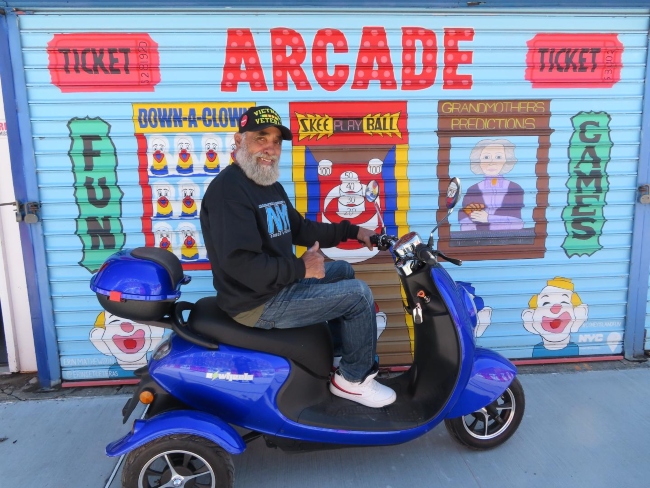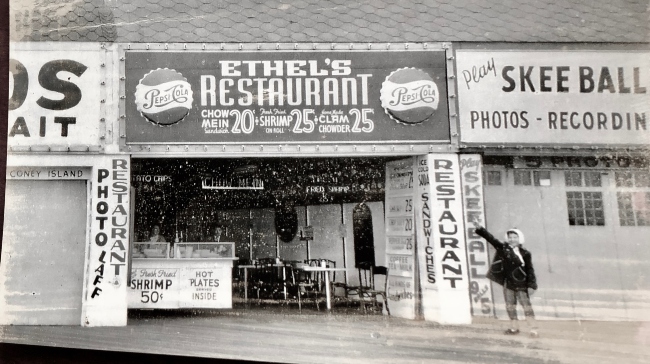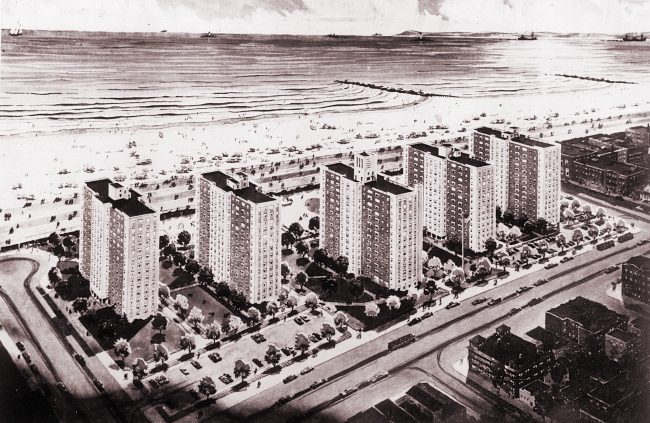
Among the recent additions to the Coney Island History Project's oral history archive are interviews with Carlos Quinones, a longtime resident of Coney Island who drove the Mermaid Avenue bus for many years; Sharon Tera, whose parents owned a popular Boardwalk restaurant; and Alan Kirschenbaum, one of the original tenants of Coney Island Houses.
Carlos Quinones, 72, is a Coney Island resident who lived in Gravesend Houses as a boy. He is well known in the neighborhood for his collection of classic cars. Quinones is a Vietnam War veteran and a retired MTA employee. In this oral history he shares memories of working games from age 14, placing the Puerto Rican flag atop the Parachute Jump in the 1970s, and driving the Mermaid Avenue bus.

Born in 1947, Sharon Tera lived in Coney Island for the first 14 years of her life. Her parents, Ethel and Ise Tera, owned Ethel's Restaurant on the Boardwalk at West 19th Street. "Between my mother being Jewish and my father Japanese, we had a combination of that kind of food," Tera says. "So we had chicken noodle soup, we had clam chowder. Or you could just get fried shrimp in a hot dog bun." Tera shares childhood memories of mastering Skee-Ball at neighboring arcades, learning to develop photos at the photo studio next door, and having free run of Washington Baths and Steeplechase Park.

Alan Kirschenbaum grew up in Coney Island Houses, where his family was among the original tenants of Coney’s first superblock high-rise housing project. They lived there from 1956 until 1966. He vividly describes the architecture and amenities of the buildings, where the windows were designed to bring in the ocean breezes, the kids played sports on the "Little Grass," and the summers seemed endless. Among his amusement park memories are Steeplechase Park's giant slide and Astroland's diving bells, rocket and trout fishing pool.
More than 400 oral histories are available for listening in the Coney Island History Project’s multilingual online archive. Please listen, share, and if you or someone you know would like to record a story via phone or Zoom, sign up here. We record oral histories in English, Chinese, Russian, Spanish and other languages with people who have lived or worked in Coney Island and nearby neighborhoods or have a special connection to these places.
Photo Credits: Charles Denson, Sharon Tera

Add new comment